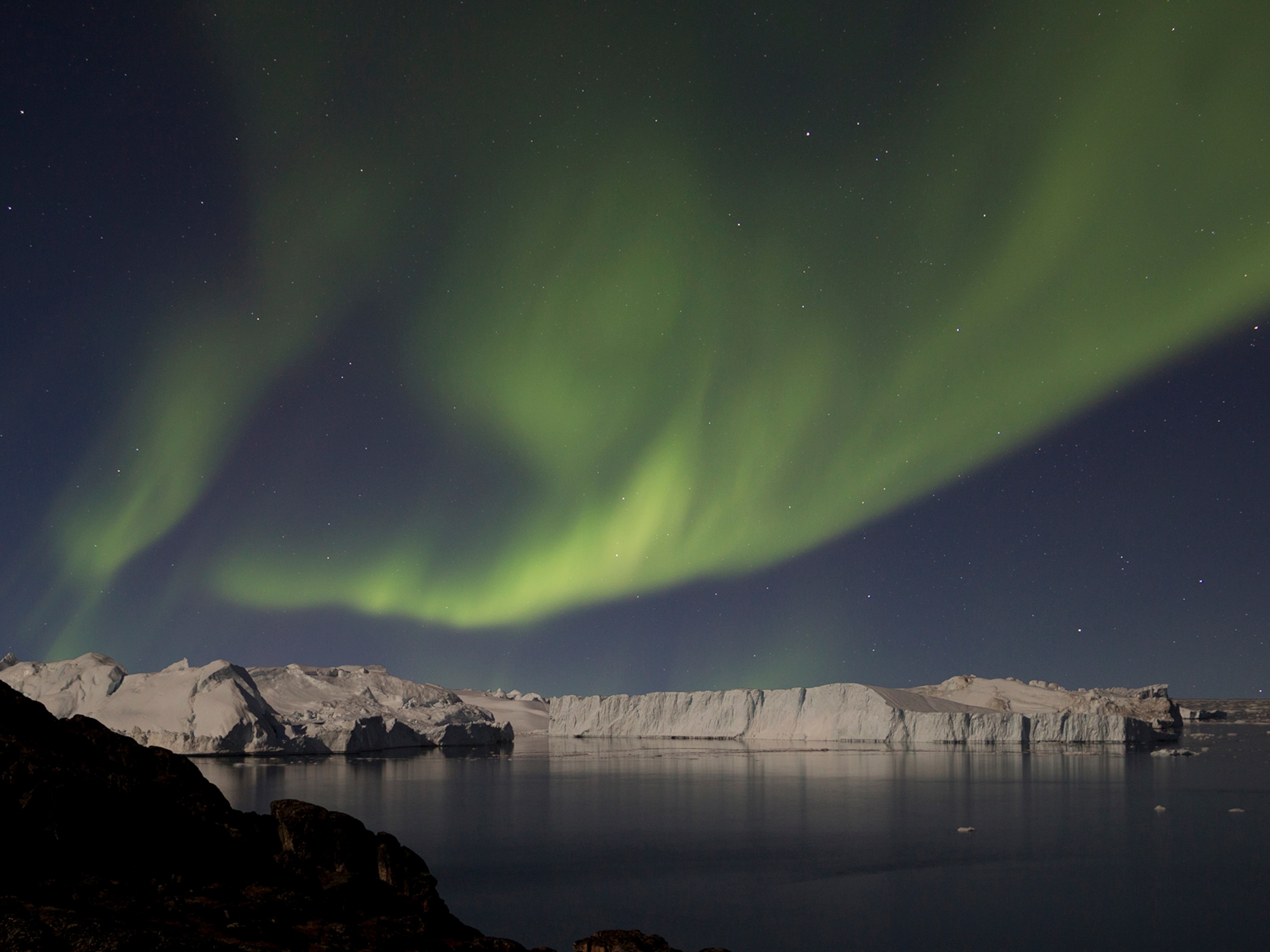
"Snowball Earth" Confirmed: Ice Covered Equator
But volcanoes would've made Earth more mud ball than snowball, scientists say.
Earth's now steamy Equator was covered with ice 716 million years ago, according to a new study.
The finding appears to add solid evidence to the theory of an ancient "snowball Earth."
The discovery hinged on proving that the right rocks had been covered by glaciers in the right place at the right time.
Study leader Francis Macdonald, an Earth scientist at Harvard University, and colleagues worked with volcanic rocks in Canada that were found sandwiched between glacial deposits. Such deposits are recognizable by the presence of debris left behind by melting glaciers and sediments deformed by glacial movement.
Using extremely precise uranium-lead mass spectrometry, the researchers determined that both the volcanic rocks and glacial sediments were deposited about 716.5 million years ago—during the purported snowball-Earth period.
The team then matched their findings to previous magnetic studies that had found these rocks had formed when Canada was situated near the Equator.
Over time the movement of Earth's tectonic plates had pushed the rocks north to Canada's Yukon and Northwest Territories.
Snowball Earth or Mud-ball Earth?
There's still plenty of mystery surrounding snowball Earth—aka the Sturtian glaciation—Macdonald said.
For example, an icy Equator alone can't tell scientists the extent of ice cover around the world. The continents may have been in a total deep freeze, or the planet may have simply been subjected to a patchwork of constantly moving glaciers or icebergs—or something in between.
And even the "snowball Earth" name might need rethinking.
Earth probably wasn't "just a white ball, but more of a mud ball," Macdonald said. Regular eruptions of ash-spewing volcanoes likely made the continents "dusty messes."
Since plants had not yet evolved 700 million years ago, the dirty ice could have been the only dark spots on Earth's surface to absorb the sun's rays. As a result, these regions may have been more likely to melt, creating water bodies where primitive life-forms, such as algae and fungi, could thrive.
That some organisms survived—and even branched off into new species—during the Sturtian glaciation adds credence to the idea that snowball Earth harbored open-water refuges, or at least cracks in the ice, Macdonald said.
For instance, modern-day ice cracks off Antarctica are "chockablock" with single-celled life-forms, he said.
(Also see "Did Plants Cool the Earth and Spark Explosion of Life?")
Global Warming Insights
Learning about Earth's past extremes may also give scientists new perspectives on modern climate change.
For instance, scientists know that over the millennia our planet has yo-yoed between pervasive ice cover and hothouse conditions such as those during the ice-free, dinosaur-packed Cretaceous period, said Macdonald, whose study appears tomorrow in the journal Science (prehistoric time line).
"This is just all to say that Earth is sensitive, and we can get perturbations that can lead to a different world," he said.
For instance, eruptions during the snowball-Earth period are thought to have added sulfur particles to the atmosphere, blocking sunlight and cooling the planet. Some experts have suggested doing the same thing artificially as a modern cure for global warming.
That means investigating such "natural experiments" in Earth's history is crucial, Macdonald said. "That's going to tell us a lot more than any little [computer] model can say."




